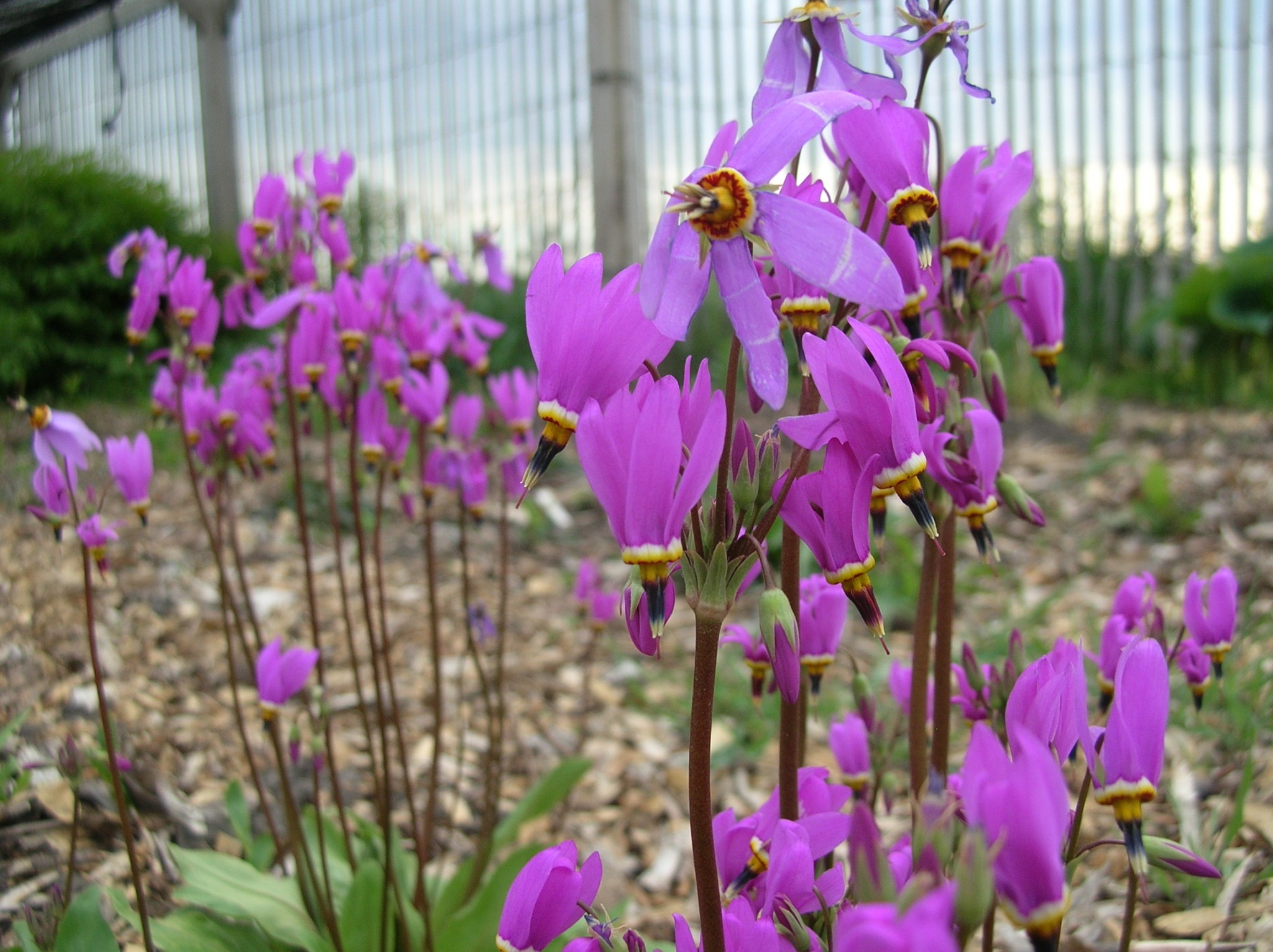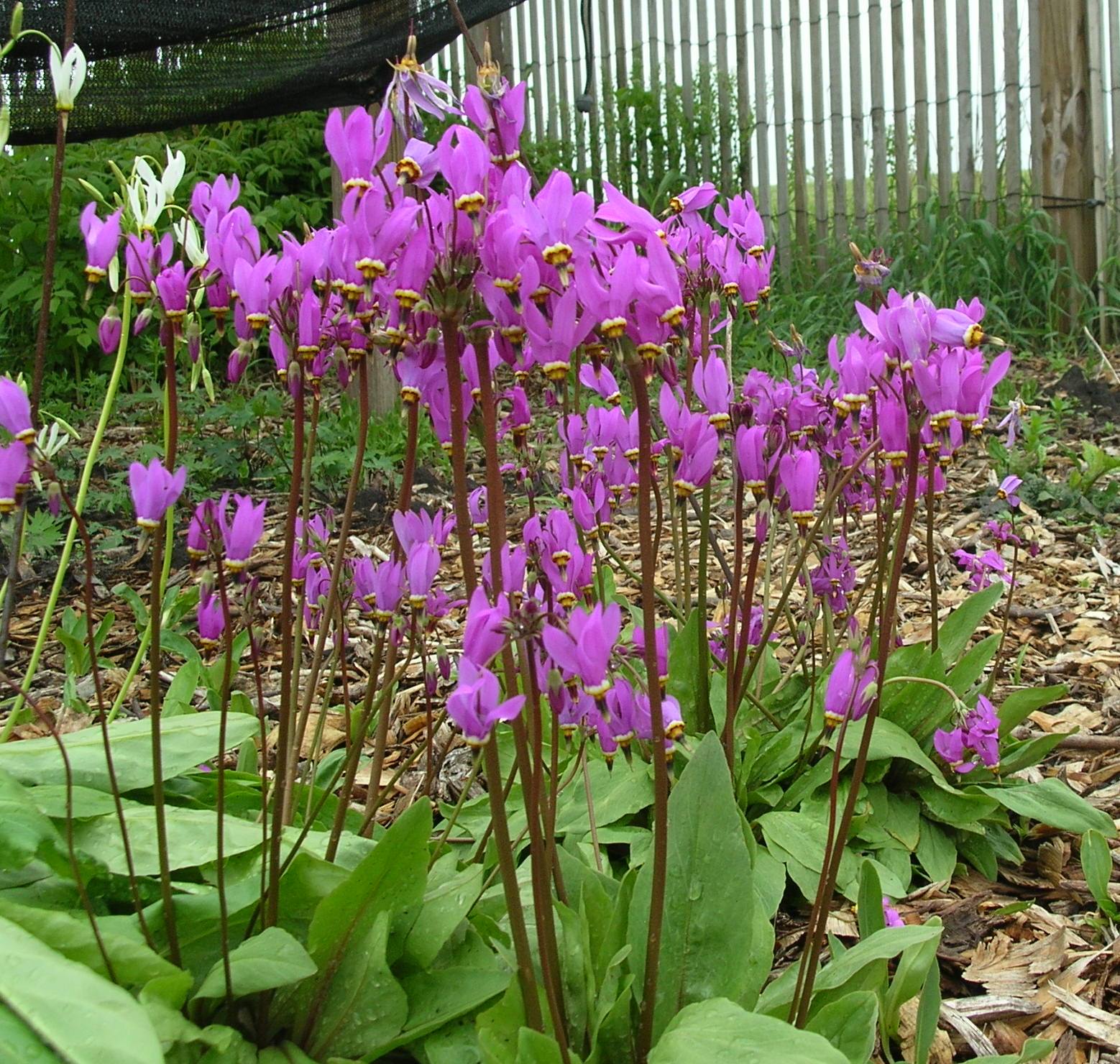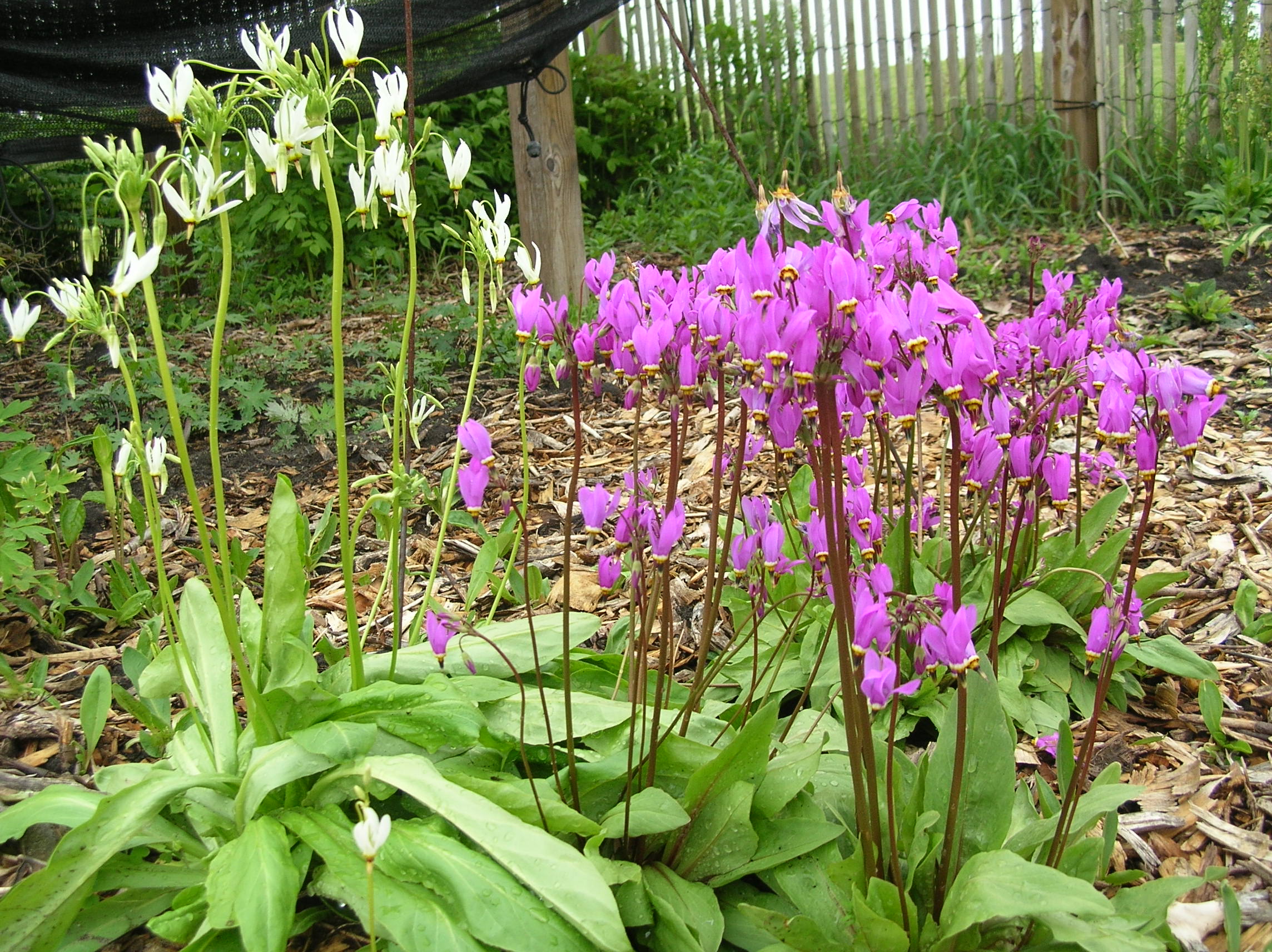Description
OUT OF STOCK – EMAIL FOR AVAILABILITY
Only available for purchase in spring – Ephemeral
Rosy-lilac reflexed flowers, looking like a descending shuttlecock, dangle from stems in spring
Rosy-lilac reflexed flowers, looking like a descending shuttlecock, dangle from stems in spring
OUT OF STOCK – EMAIL FOR AVAILABILITY
Only available for purchase in spring – Ephemeral
Rosy-lilac reflexed flowers, looking like a descending shuttlecock, dangle from stems in spring
Indigo blue racemes in June followed by ornamental black seed pods on this perennial that looks like a shrub. This is a legume that improves soil fertility by making nitrogen available to the Baptisa and surrounding plants. Internationally known garden designer Piet Oudolf’s 100 “MUST HAVE” plants, Gardens Illustrated 94 (2013).
Size: 3' x 3'
Care: Full sun sandy soil. Heat and drought tolerant, with no staking needed.
Native: Eastern United States, Wisconsin native.
Wildlife Value: Food source for several caterpillars and nectar for a number of butterflies.
Awards: Received England’s Royal Horticultural Society Award of Merit. Perennial Plant Association Plant of the Year Award, 2010. Missouri Botanic Garden Plant of Merit
Baptisia is Greek meaning to dye referring to use of the plant as a substitute for indigo dye. Cherokee used Baptisia australis for a number of illnesses: cease mortification, cure toothaches and induce vomiting. Collected by John Bartram (1699-1777) plant explorer and colonial nurseryman by 1748.
Clean white variegated leaves and flowers (bracts), very showy midsummer to fall. Use caution with internal milky sap.
Size: 18” x 10”
Care: sun moist well-drained soil, drought tolerant.
Native: Plains from Dakota to Texas
Size: Wonderful cut flower just be careful of the milky sap.
Sioux crushed leaves in water and boiled it for a liniment to remedy swelling; boiled whole leaves in water to increase milk for new mothers. Collected on Lewis and Clark expedition three times, once July 28, 1806 along Marias River. A “most elegant species.” Breck, 1851.
Umbels of arching stems with nodding bells of lilac shading to pink or occasionally white. May to June.
Size: 12”-18”x 3-6”
Care: sun to part shade in moist well-drained soil
Native: Canada to Mexico, Wisconsin native
Wildlife Value: nectar source for Hairstreak butterfly, Attracts hummingbirds.
Cernuum is Latin meaning “nodding.” Many groups of 1st Americans ate the bulbs raw, roasted or dried for winter storage or as flavoring for soups and gravies. Cherokee used this plant medicinally to cure colds, hives, colic, “gravel & dropsy,” liver ailments, sore throats, “phthisic,” and feet in “nervous fever.” Those in the Isleta Pueblo were not quite as creative as the Cherokee and used this only for sore throats and infections. Meriwether Lewis collected this in Montana and wrote, “I met with great quantities of a small onion about the size of a musquit ball … They were crisp, white and well-flavoured. I gathered about a half a bushel of them before the crew arrivd.” Chicago is believed to be named for the Algonquin word for this plant chigagou.
Airy pink panicles like delicate billowing clouds of seed heads, top clumps of arching slender leaves in mid-summer persisting through winter.
Size: 2-4' x 18"
Care: moist soil in sun to shade
Native: Europe, Asia & No. America, Wisconsin native
Deschampsia named for French botanist Deslongchamps (1774-1849.) Caespitosa means that it grows in clumps. Named and described in 1753.



